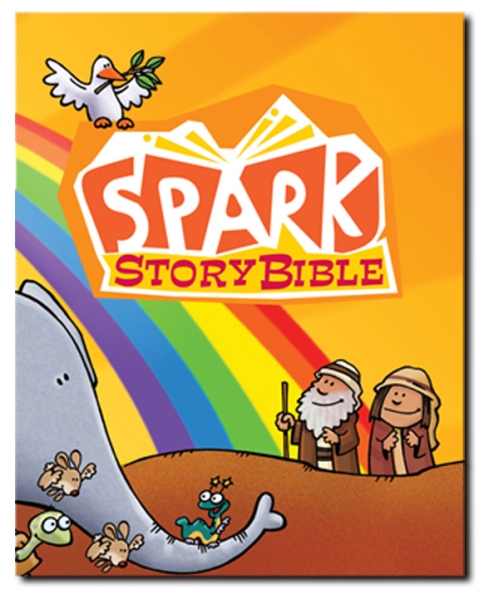I began my preschool Godly Play storytelling with, well, the Beginning. The foundational story is Creation and the way you tell this Story gives you a great foundation for how the Godly Play method works. It sets you up for the intentional, repetitive, method that you will use for all the Young Children and Worship stories.
Let me begin this post with how to make the Creation Cards. Luckily for me, my wife had already made a set of Creation Cards for us to use with our kids at home. I just borrowed them and took them to church to use for the time being (I will make my own set at some point). The only thing I had to provide was the long, black, underlay that you unroll and place the cards on as you tell the Story and the tray to gather all the materials in. We had large piece of black fabric in our church resource room, so I just cut the correct length and width according to the YCAW instructions. I must admit, sewing is not my thing. I am pretty good at arts and crafts, but I am no good with fabric. My cut was pretty ugly, but the underlay works just fine. I think perfection is the first hangup you need to abandon! Just do your best and remember the focus in on the Story and not the materials.
 |
| Creation Cards Tray |
When it came time to do the story, I was a little nervous. I am pretty busy at work with my two roles as children's minister and preschool director, so I didn't get a ton of time to practice or memorize the storytelling pattern. One thing that really helped though was to watch someone else do the story on YouTube. University Presbyterian Church in Seattle, WA posts demonstrations of the storytelling on their channel. Besides getting to see the entire story presentation, the thing that made me most comfortable was seeing an experienced Godly Play leader didn't have everything memorized. She referred to an open 3-ring binder while she told the story, so she wouldn't miss the words. In the Godly Play method, the words ARE important and we need to make sure we use the intentional language as we share the stories.
I share the Story with the preschoolers at my church. We have three classes: Twos, Threes, and Fours. Each class comes to me at a different time to keep the numbers smaller while I tell the story. The Twos classes only have 6-7 children, while the Threes and Fours have 10-14. At first, I didn't have a classroom set aside for Godly Play, so I just met with them in an unused class that had an open area I could use for storytelling. In November, I had time to get an old class that we aren't using cleaned out and partially set up to be a dedicated Godly Play Room (I will do a setting up a Godly Play classroom post later). With this lesson, I set everything up on the floor so it would be easy for the kids to see everything.
My only real problem with telling the story was the kids who kept creeping forward so they were right on top of the Creation Cards. We have several kids who have to touch everything to experience it fully! Of course, that is fully expected with preschoolers. I have a couple who are a little more aggressive though. I just kept right on following the story pattern. When it got to be too much, I just stopped and called the child's name and very gently asked them not to touch. At this point Godly Play was totally new for them. We used to do our Bible Story times in our church's small chapel where the kids were separated from me in pews. Now they were right up there with me and totally interested in my props. I tried to be intentional about keeping my voice at a low volume and very pleasant and so far that has worked very well. Try number one went pretty well for a novice Godly Play facilitator!












